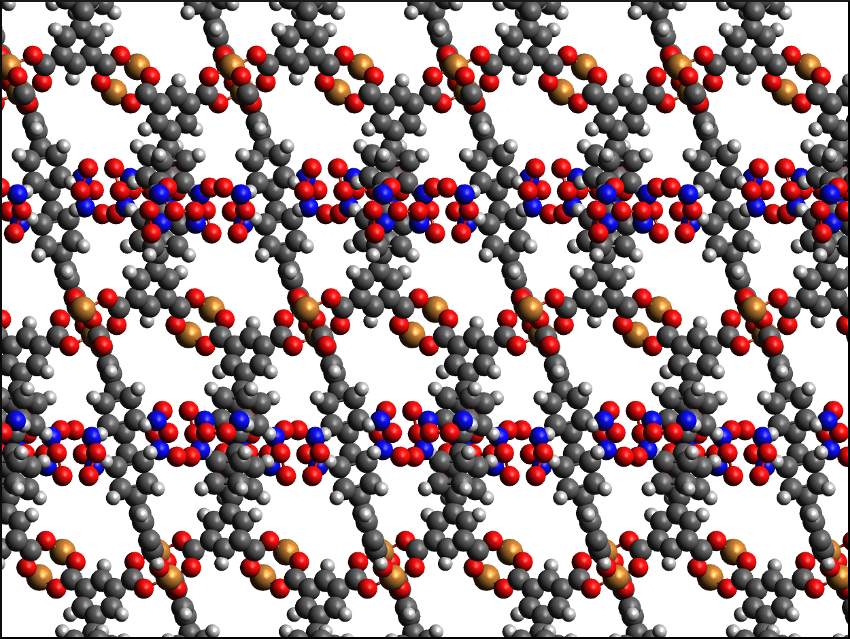Carbon dioxide is a greenhouse gas and a major contributor to climate change. Techniques for the capture and storage of CO2 could help to reduce its harmful effects and also allow the use of CO2 as a sustainable chemical feedstock. Currently used methods for CO2 capture are fairly expensive and often use toxic amines. The adsorption of CO2 using porous materials, such as metal–organic frameworks (MOFs), could be an alternative.
Sihai Yang, Martin Schröder, University of Manchester, UK, and colleagues have found that nitro substituents can significantly enhance the CO2 adsorption of MOFs. The team studied four MOFs: a copper-based parent compound with diisophthalate ligands (MFM-102) and three derivatives with different additional functional groups (nitro-, amine-, and alkyl groups) at the ligands. The four MOFs were synthesized using solvothermal methods. They all crystallize in the same overall structure.
The team measured the pore volumes and surface areas of the MOFs via the adsorption of N2 and found that introducing substituents at the ligands reduces both of these values. However, the presence of alkyl-, amine-, or nitro-groups enhances the CO2 uptake of the MOFs by 22 %, 32 %, and 36 %, respectively. The nitro-substituted MOF (structure pictured), thus, shows the highest adsorption capacity for CO2 (184 cm3 g−1 at 273 K and 1 bar). The team attributes this improved CO2 uptake to the electron-withdrawing effects of the nitro groups, which enhance the binding to hydrogen-bond donors in the pores, as well as to direct interactions of CO2 with the nitro groups. According to the researchers, this is the first example of CO2 binding to a nitro group in a porous MOF.
- Observation of binding of carbon dioxide to nitro-decorated metal–organic frameworks,
Thien D. Duong, Sergey A. Sapchenko, Ivan da Silva, Harry G. W. Godfrey, Yongqiang Cheng, Luke L. Daemen, Pascal Manuel, Mark D. Frogley, Gianfelice Cinque, Anibal J. Ramirez-Cuesta, Sihai Yang, Martin Schröder,
Chem. Sci. 2020.
https://doi.org/10.1039/c9sc04294f



